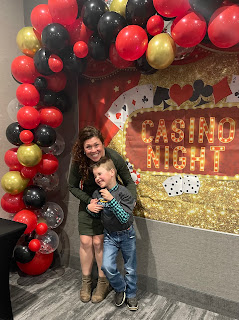Visually Impaired children NEED access to Literacy.
As many of you know the little prince has Cortical Visual Impairment (CVI). We consider this to be his greatest challenge in life.
 Thankfully we when we set out on our journey, we found organizations making statements about the necessity of CVI. American Printing House for the Blind (APH) upholds the following statement, produced in 2008 on CVI. "Children who have Cortical Visual Impairment (CVI) require educational supports that are equal to those who are considered to be blind or visually impaired."
Thankfully we when we set out on our journey, we found organizations making statements about the necessity of CVI. American Printing House for the Blind (APH) upholds the following statement, produced in 2008 on CVI. "Children who have Cortical Visual Impairment (CVI) require educational supports that are equal to those who are considered to be blind or visually impaired."When assessing how to propel him forward in life we quickly understood it comes down to LITERACY. He is happy to simply move around his world by feeling, smelling, and listening, BUT THEN the frustrations set in. He has vision, and he needs assistance to guide him into accessing his visual world. This BEGINS with building his literacy skills.
We use approaches researched and developed by Dr. Christine Roman-Lantzy. We have changed the way we interact and have learned to describe "salient features" (Roman). These are the descriptors which make the objects stand out from the complex worlds they live in. I have mentioned before how Archer has learned to find "door handles" by LOOKING for the round, shiny, handle on doors. This is a motivating object to find as he loves going outdoors, also the item is accessible to him as it's in his upper right visual field.
Now, that he understands where to look for a handle, we get to advance his skill sets by using "comparative language" (Roman) which will indicate exactly "what" door handle he may be looking at. As our child moves into Phase II, his goals increase by integrating vision and function. For example, we might say "Archer, here is a picture of a door handle, this one is long and shiny. This is the door handle at school. It is different than the round and shiny handle at home. But both will open and close doors." This is the level of metacognitive thinking these children are capable of.
 We as parents know he has so much more potential when the appropriate interventions are set in place. He CAN SEE BEST when the 10 Characteristics of Cortical Visual Impairment are taken into account (Roman).
We as parents know he has so much more potential when the appropriate interventions are set in place. He CAN SEE BEST when the 10 Characteristics of Cortical Visual Impairment are taken into account (Roman).1. Color preference
2. Need of movement
3. Visual latency
4. Visual field preferences
5. Difficulties with visual complexity
6. Need for light
7. Difficulty with distance viewing
8. Atypical visual reflexes
9. Difficulty with visual novelty
10. Absence of visually guided reach
 Not only do we know he can see best when these 10 characteristics are followed and supports appropriately in place. We have seen him advance with the CVI Range Assessment from Phase I to Phase II. It works and it's not just with my child. Many children out there have progressed to Phase III CVI. Capable of reading text, NOT braille reading, these children NEED your help. Having multiple disabilities does not HOLD BACK individuals from becoming LITERATE.
Not only do we know he can see best when these 10 characteristics are followed and supports appropriately in place. We have seen him advance with the CVI Range Assessment from Phase I to Phase II. It works and it's not just with my child. Many children out there have progressed to Phase III CVI. Capable of reading text, NOT braille reading, these children NEED your help. Having multiple disabilities does not HOLD BACK individuals from becoming LITERATE.Talk about your little buddy Archer with Cortical Visual Impairment. Connect us with those that want to learn more, or better yet if you know a family struggling to find resources there is help. On the miraculous moment you talk with another individual that has heard of CVI, I want to know them too! We need the numbers and voices behind us.
If you enjoy the t-shirts featured on the boys. Please support StartSeeingCVI another mothers voice, whom created the t-shirts. Want to buy a t-shirt, click here, half of the proceeds go to Pediatric Cortical Visual Impairment Society, the very organization I will be presenting at this summer in Omaha. Interested in attending the annual meeting? Travel to demanding? LIVE webcast option will be available, click here to register. EDUCATE. ADVOCATE. CVIRANGE.



